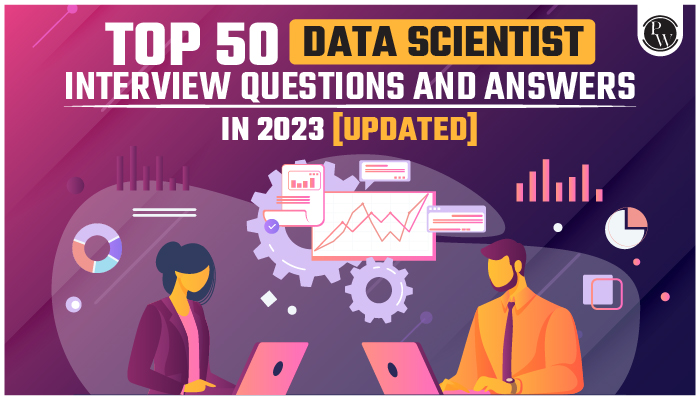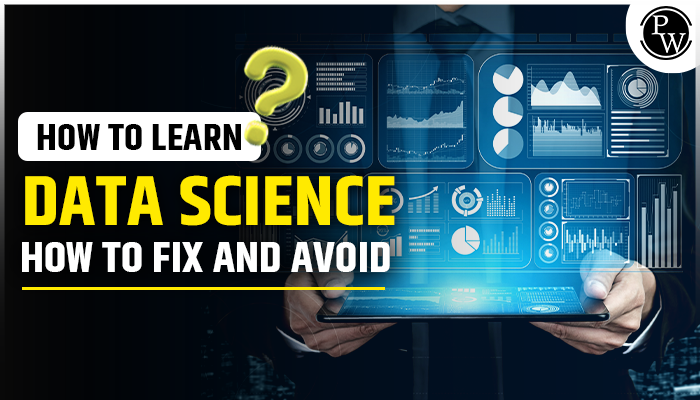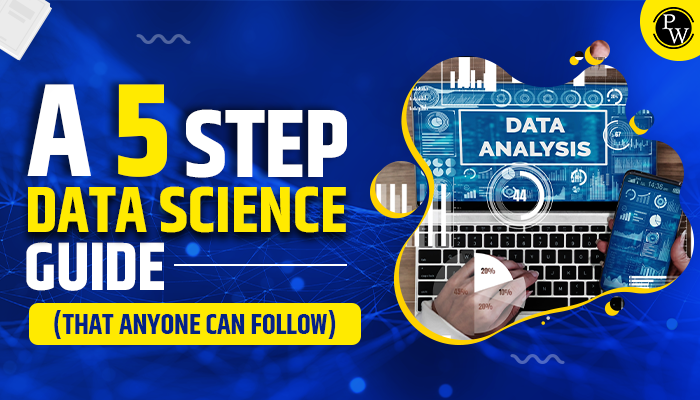Here you can find a list of top data science interview questions and answers, one of the most commonly employed and advanced technologies nowadays. Large organizations have a significant need for experts in this field of Data Science course and some of the highest incomes in the IT sector as a result of their high demand and scarcity.
You may find the frequently asked Data analytics interview questions and answers on our site, which were usually created with your needs in mind. We divided the interview questions into groups according to their difficulty and belonging. The questions usually listed below were usually compiled using the perspectives of data science professionals.
Recommended Courses :
- Decode Data Science with ML 1.0
- Decode Full Stack Web Dev 1.0
- Decode JAVA with DSA 1.0
- System Design
Data Science Interview Questions With Answers –
Companies are flooded with a large amount of information in today’s data-driven environment. Data science interview questions The difficulty is in turning this raw data into insightful knowledge that can guide well-informed choices. The role of data analysts in this situation is crucial. Data analysts extract, evaluate, and present data in a meaningful way using their analytical skills and topic experience, assisting companies in making data-supported strategic decisions.
Top Data Science Interview Questions With Answers for Selections
data science interview questions are professionals that acquire, arrange, and examine data to find patterns, trends, and insights. They deal with a variety of data formats, both organized (like databases) and unstructured (like social media feeds), to extract relevant information. Additionally, they use cutting-edge statistical methods and analytics technologies.
The following are the key responsibilities of a Data Scientist :
1.) Data collection: Data analysts gather pertinent information from various sources, making sure that it is accurate, complete, and consistent.
2.) Data Preprocessing and Cleaning: They organize and clean up raw data, locating and fixing any discrepancies, missing data, or abnormalities that could have an impact on the study.
3.) Exploratory Data Analysis: To comprehend the properties, connections, and potential insights of the data, data analysts use exploratory approaches.
4.) Statistical Analysis: They use statistical techniques to find trends, correlations, and patterns in the data, assisting organizations in making data-driven choices.
5.) Data Visualisation and Reporting: To effectively share insights with stakeholders and decision-makers, data analysts produce visual representations, including charts, graphs, and dashboards.
6.)Performance Monitoring: They keep track of key performance indicators (KPIs) and create metrics to evaluate the
Examine some of the most significant and typical inquiries for the data analyst position.
PW Skills Provide Various Platform
1. Can you describe the procedures you usually use while analyzing a dataset?
My normal method is systematic, beginning with data collection, moving on to data preprocessing and cleaning, exploratory data analysis, statistical analysis, data visualization, and concluding with a presentation of the findings to stakeholders.
2. In your analysis, how do you manage missing data?
How missing data is handled depends on its kind and degree. Imputation (changing missing values with approximated ones), deleting incomplete cases, and treating absence as a separate category are examples of common procedures. The decision is based on the unique dataset and the objectives of the study.
3. Describe the data pre-processing and cleaning process.
The act of removing duplicates, outliers, inconsistencies, and any missing values from a dataset is called data cleaning. To prepare the data for analysis, preprocessing involves standardizing variables, modifying skewed distributions, scaling features, and encoding categorical variables.
4. How do you tell which dataset variables, elements, or features are most important?
To find pertinent variables, I use a variety of approaches, including correlation analysis, feature importance from machine learning models, stepwise regression, or domain expertise. The study topic, context, and statistical significance of the variables must all be taken into account.
5. Why is SQL useful for data analysis? What is SQL?
The answer is that relational databases are managed and worked on using the computer language SQL (Structured Query Language). It is crucial for data analysis because it enables analysts to extract, alter, and analyze data, run complicated queries, and aggregate and summarize data for reporting and analytical needs.
6. In SQL, how do INNER JOIN and OUTER JOIN differ from one another?
An inner join only returns rows with matching values in the two connected tables, as opposed to an outer join, which returns all rows from one table and matching rows from the other. OUTER JOIN can be further broken down into the subcategories of LEFT JOIN, RIGHT JOIN, and FULL JOIN, depending on whether the table’s data is included.
7. How can you use SQL to search for duplicate records in a table?
The GROUP BY and HAVING clauses may be used to identify duplicate data. Here is a sample inquiry:
SELECT column1, column2, COUNT() FROM table_name GROUP BY column1, column2, AND COUNT() > 1 IN column1, column2.
Based on the chosen columns, duplicate records will be shown.
8. What do the terms “primary key” and “foreign key” mean in SQL?
A primary key is a special code that distinguishes each entry in a database. It guarantees data integrity and enables speedy data retrieval. A field in a table that relates to the primary key of another table is regarded as a foreign key. By creating a connection between the two tables, it ensures referential integrity.
9. Describe the differences between UNION and UNION ALL in SQL.
In contrast to UNION ALL, which combines the result sets without deleting duplicate rows, UNION combines the result sets of two or more SELECT queries. Because it doesn’t do the duplicate removal procedure, UNION ALL is quicker than UNION.
10. Why does data visualization matter while analyzing data?
The ability to clearly and concisely explain complicated data insights is one of the reasons data visualization is crucial. Thanks to visual representations, stakeholders may more quickly comprehend trends, patterns, and correlations within the data, which improves decision-making.
11. What is the importance of color in Data Visualisation?
In data visualization, color is a potent tool. It can be applied to emphasize certain data points, show patterns and trends, represent several categories or variables, or generate visual contrast. However, it’s crucial to utilize color carefully, keeping in mind accessibility and preventing color blindness-related misunderstandings.
12. Which methods are most successful for producing compelling data visualizations?
The use of appropriate titles and labels, context and concise explanations, effective use of color to highlight important information, appropriate scaling, and making sure the visualization is aesthetically pleasing and simple to understand are some best practices for producing successful data visualizations.
13. What is Tableau, and how does it function while analyzing data?
Data Analysts may generate dynamic and aesthetically pleasing dashboards, reports, and charts using the sophisticated data visualization and business intelligence platform Tableau. Users may do data blending and transformation, connect to a variety of data sources, and create visualizations to produce insights.
14. In Tableau, how do you construct a calculated field?
In Tableau, you can create a calculated field by right-clicking on the data pane, choosing “Create Calculated Field,” and then specifying the calculation in the formula editor. You may calculate using pre-existing fields or unique formulas to gain fresh insights thanks to calculated fields.
15. What are the differences between Tableau’s dimensions and measures?
For example, client names or product categories are categorical variables known as dimensions in Tableau. On the other hand, measures are quantitative or numerical variables that reflect facts that may be combined, such as sales revenue or profit. Measures are often used for computations and aggregation, whereas dimensions are frequently used for grouping and categorization.
16. In Tableau, how do you make a dual-axis chart?
To make a dual-axis chart, you may drag two measures onto the “Columns” or “Rows” shelf. Select “Dual Axis” from the menu by performing a right-click on one of the measurements. This enables more meaningful visualizations by allowing you to compare two separate metrics on two different scales using common dimensions.
17. What does a Tableau parameter do, and how do you utilize it?
In Tableau, a parameter is a user-defined input that enables interactive visualization, customization, and exploration. Users can dynamically change inputs or values to affect computations and filtering options. A list of values, a computed field, or a range of values can be used to generate parameters.
18. What exactly is a Tableau data extract?
A compressed, optimized subset of the data taken from the original data source is known as a Tableau data extract. It is kept in Tableau’s exclusive format, which allows for quicker performance and effective data analysis. Data extracts are helpful because they lessen the need for a live connection to the data source when dealing with big datasets or when offline access is necessary.
19. In Tableau, how do you make a dashboard?
In Tableau, you can drag and drop spreadsheets, charts, and other items into the dashboard canvas to build a dashboard. After that, you may rearrange and resize these elements as well as add text, photos, filters, and interactive elements to provide a unified and engaging display of the data. Multiple visualizations are aggregated into aesthetically pleasing dashboards.
20. In statistics, what distinguishes a population from a sample?
A whole collection of people, things, or events of interest are referred to as a population in statistics. You want to draw conclusions about the entire group. On the other hand, a sample is a portion of the population. A smaller representative sample of the population is used to make inferences or forecasts about the population as a whole.
21. The central limit theorem: what is it, and why is it significant?
The central limit theorem predicts that as sample size rises, the sampling distribution of the sample means will resemble a normal distribution, independent of the form of the population distribution. This is significant because, under some circumstances, it enables us to draw conclusions about the population using sample data.
22. What distinguishes correlation from causation?
An indication of how two variables fluctuate together statistically is referred to as correlation. It gauges the association’s strength and direction. On the other hand, causality indicates a cause-and-effect relationship between two variables, showing that changes in one variable directly affect changes in the other. Correlation does not prove causation because other factors or forces may be at play.
23, What does the p-value mean when testing a hypothesis?
The likelihood of seeing a test statistic that is equally extreme or more extreme than the one derived from the sample data, given the null hypothesis is correct, is known as the p-value. It aids in determining the results’ statistical significance. The results are deemed statistically significant if the p-value is less than the preset significance threshold (for example, 0.05), which shows evidence against the null hypothesis.
24. How do Type I and Type II errors in hypothesis testing differ from one another?
A Type I error in hypothesis testing happens in data science interview questions when the null hypothesis is disregarded even if it is correct. It stands for a falsely positive finding. A Type II error, on the other hand, happens when the null hypothesis is accepted despite being erroneous. It indicates a misleading negative outcome. As a result of the inverse relationship between Kind I and Type II errors, lowering one kind of error raises the probability of the other.
26. What distinguishes descriptive statistics from inferential statistics?
Descriptive statistics summarise and describe data using measurements like mean, median, standard deviation, and graphical representations. It strives to give a clear overview of the information. On the other hand, inferential statistics uses sample data to derive conclusions and inferences about the population as a whole. It employs methods like confidence intervals and hypothesis testing.
27. Describe the machine learning notion of overfitting.
This is known as overfitting when a machine learning model performs well on training data but poorly on new, untried data. It occurs when a model grows overly complicated and begins to capture random fluctuations or noise in the training data rather than the underlying patterns. Techniques like regularization, cross-validation, or utilizing extra training data can all be used to reduce overfitting.
28. What distinguishes supervised from unsupervised learning?
In supervised learning, inputs are coupled with appropriate target labels, and the system is taught using labeled data. Based on the patterns discovered during training, the algorithm develops the ability to anticipate the labels of fresh, unused data. There are no goal labels in unsupervised learning. The program investigates the data without any specified outputs to discover innate patterns, correlations, or clusters.
29. What do you understand by Cross-Validation?
A machine learning model’s performance and generalizability are assessed using the cross-validation approach. It entails dividing the dataset into a number of subgroups or “folds.” A significant portion of the dataset is used to train the model, while the leftover is used to validation. This process has multiple iterations, with various subsets acting as the validation set. Cross-validation aids in calculating the generalization error of the model and evaluating how well it performs on unknown data.
30. How can we use Excel in data analysis?
Microsoft Excel is a popular spreadsheet program that enables users to arrange, examine, and work with data. Data entry, computation, formatting, and visualization functions are available. Excel is used in data analysis to carry out operations such as data cleansing, sorting, filtering, constructing formulae and functions, producing charts, and carrying out fundamental statistical analysis.
31. In Excel, how do you make a pivot table?
The steps are as follow to construct a pivot table in Excel:
- Choose the data set that you want to examine.
- Navigate to the “Insert” tab and choose “PivotTable.”
- Choose the pivot table’s range and placement in the dialogue box.
- Drag and drag the pertinent fields to the values regions, rows, and columns.
- Make necessary adjustments to the pivot table’s format, layout, and summary computations.
32. What does Excel conditional formatting mean?
The function known as conditional formatting in Excel enables you to format cells in accordance with predefined criteria or rules. It assists in graphically highlighting data that satisfy particular requirements. For instance, using conditional formatting, you may highlight duplicate cells, apply color scales based on cell values, or highlight cells with values over a specific threshold.






